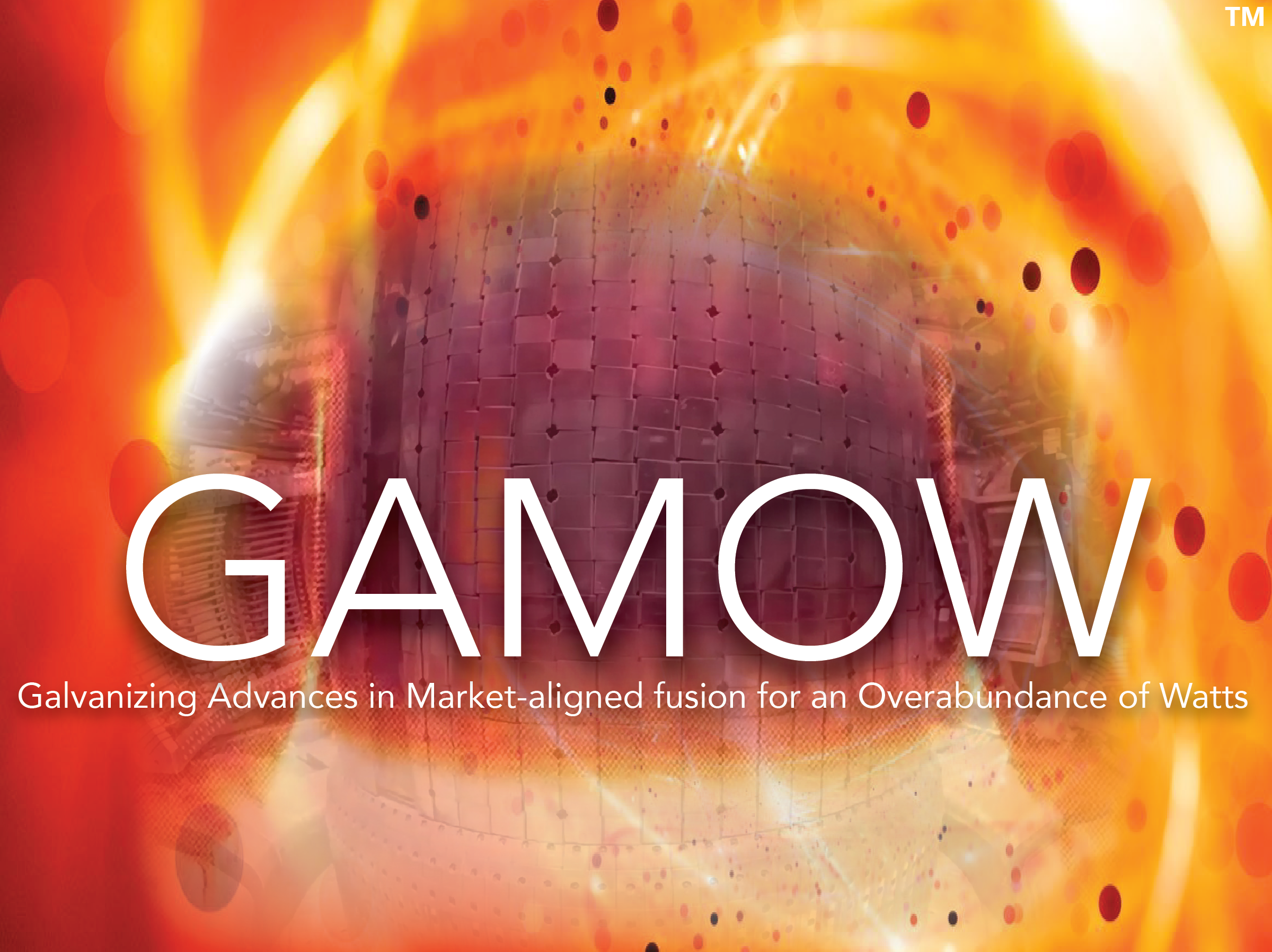
Department of Energy Announces $29 Million in Fusion Energy Technology Development
WASHINGTON, D.C. – Today, the U.S. Department of Energy (DOE) announced $29 million in funding for 14 projects as part of the Galvanizing Advances in Market-aligned fusion for an Overabundance of Watts (GAMOW) program, which is jointly sponsored by the Advanced Research Projects Agency-Energy (ARPA-E) and the Office of Science–Fusion Energy Sciences (SC-FES).
GAMOW teams will work to close multiple fusion-specific technological gaps that will be needed to connect a net-energy-gain “fusion core," once it is ready, to a deployable, commercially attractive fusion system. Projects will address one or more research and development (R&D) categories, including (1) technologies, materials, and superconducting-magnet and fuel-cycle subsystems between the fusion plasma and balance of plant, (2) cost-effective, high-efficiency, high-duty-cycle, electrical-driver technologies, and (3) cross-cutting areas such as novel fusion materials and advanced and additive manufacturing for fusion-relevant materials, components, and their cost-effective scale-up.
“Fusion energy is a potentially game-changing clean energy source, but it has faced scientific and technical challenges for decades,” said ARPA-E Director Lane Genatowski. “GAMOW teams will work to further develop enabling fusion materials and subsystem technologies, with a focus on the timely future commercialization and deployment of fusion energy generation.”
"This program draws on the capabilities and expertise of national laboratories, universities, and private industry to tackle key technological challenges on the road to fusion energy," said Dr. Chris Fall, Director of DOE's Office of Science. “These projects will help keep America in the forefront of fusion energy research.”
Historically, fusion energy development efforts have largely focused on achieving the required fuel density, temperature, and energy confinement time required for a viable fusion energy system. While recent investments have been made in the development of a viable and net-energy-gain fusion-energy system, there remains a significant need to focus on the materials and enabling technologies that will be needed to establish fusion energy’s technical and commercial viability once net energy gain is achieved.
GAMOW projects will work in synergy with both publicly and privately funded fusion-development efforts, including ARPA-E’s ALPHA and BETHE fusion programs, and they will leverage the technical resources and basic research SC-FES sponsors in these areas. ARPA-E and SC-FES will jointly fund the projects over the program’s three-year lifespan.
A sampling of GAMOW projects can be found below; for the full list of projects click HERE.
University of Houston – Houston, TX
Advanced HTS Conductors Customized for Fusion - $1,500,000
RE-Ba-Cu-O (REBCO, RE = rare earth) tapes enable >20-T magnets in compact, high-field magnetic-fusion devices. However, commercial REBCO tapes are expensive and use substrates that limit their yield strength at the operating condition of high-temperature superconductor (HTS) magnets for compact fusion energy systems. The University of Houston proposes to address these challenges by developing HTS conductors with increased critical current at >20 T and lower raw-materials cost for use in commercial fusion systems. The team will employ an advanced metal organic chemical vapor deposition process to reduce costs while achieving high critical-current thresholds, and use high-strength alloys to increase the yield strength of REBCO tapes. These innovations could reduce the cost of HTS conductors by a factor of 30.
Phoenix, LLC – Madison, WI
Application of Plasma-Window Technology to Enable an Ultra-High-Flux DT Neutron Source - $2,500,000
Phoenix will seek to increase the neutron flux by a factor of 100 over that of state-of-the-art beam-target fusion neutron sources by developing and testing a plasma window (PW) to enable an increase in the pressure of the gas target. By project end, the PW should be ready for integration with a commercial steady-state gas-target neutron generator. This combination may ultimately enable a cost-effective, groundbreaking, “fusion-prototypic” source of neutrons representative of the environment that fusion-power-plant materials/subsystems will endure in operation. It will enable tests to accelerate fusion materials and small-component development, offering the potential to help reduce the technical, financial, and regulatory risks of fusion-energy technologies.
